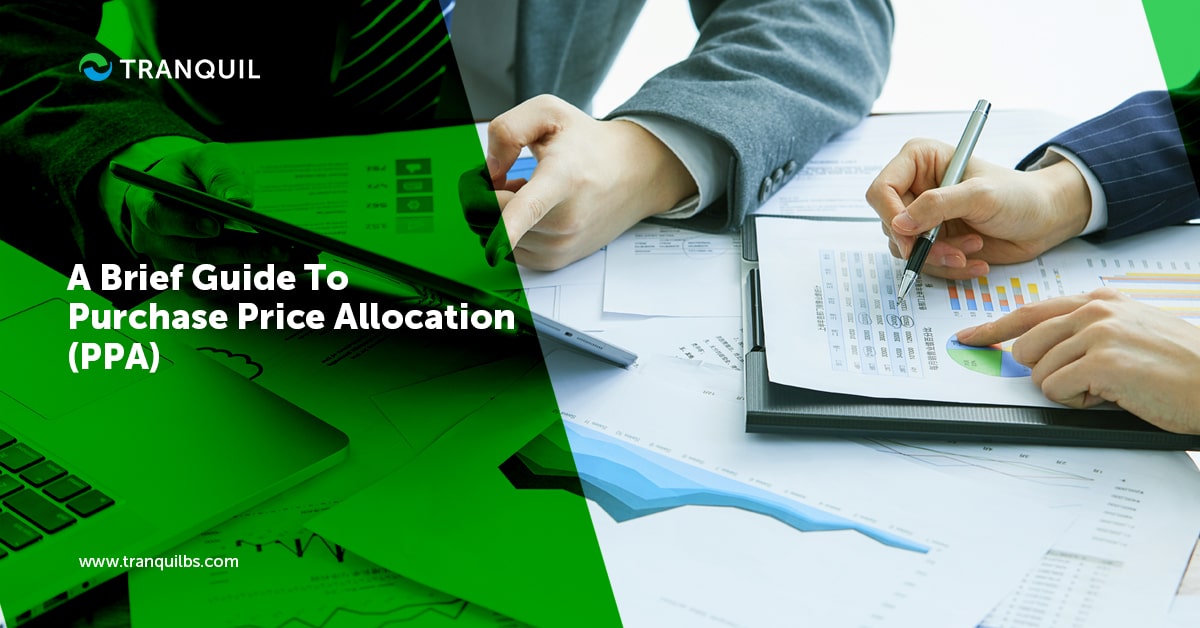
When one corporate entity merges with another, or takes another entity over, the process is called mergers and acquisitions, or M&A.
When this happens, there is obviously, a lot of accounting work that’s required.
Today, we will look at one of the accounting elements in M&A, Purchase Price Allocation.
ALSO READ: Cost Reduction Strategies in Procurement
PPA is an accounting practice whereby the purchaser or acquirer assigns a price to the assets and liabilities of the company they are acquiring.
It is a crucial step and is also mandated by regulatory authorities.
Previously it was mandatory only for acquisitions but now it is compulsory for mergers as well.
ALSO READ: What is Asset Depreciation?

This refers to the net value of the assets of the company being acquired, after subtracting the total amount of liabilities from the total asset value.
The identifiable assets are those that have a certain value at a specific time and whose benefits can be identified and quantified reasonably.
They denote the book value of the assets on the acquired company’s balance sheet, and include tangible and intangible assets.
If the carrying value of the asset is lower than the fair market value, an adjusting increase is made to it.
The amount to write up is decided when an independent valuation specialist determines the fair market value of the target company’s assets.
ALSO READ: What is Landed Cost and How to Calculate It?
Goodwill is an intangible asset, which is paid additionally beyond the company’s net asset value.
In accounting, it’s calculated as the difference between the purchase price and the fair market value of assets of the target company.
Most accounting regulatory bodies insist on revaluation of recorded goodwill annually, and record impairment adjustments if needed.
It is sometimes amortized over the years but never depreciated.
It must be noted that the costs related to M&A like consultation, advisory, and legal fees are not considered in PPA.
The acquirer must record all costs that are charged for each service, as per accounting requirements.
ALSO READ: Common Accounting Challenges

On the conclusion of an M&A deal, accounting regulations make it necessary to do PPA valuation.
Its chief aim is to assign a price that’s to be paid to purchase the target company and then distribute it to the assets and liabilities purchased – which should reflect the fair market value.
These are the steps:
ALSO READ: What is Reverse Factoring?
The acquirer’s balance sheet will show the acquired company’s assets which must reflect the adjust fair values.
The assets written up or down may include:
The fair value of tangible stocks, especially PP&E forms the new base for the schedule of depreciation, and intangible assets acquired if any, may be amortized over their expected lives.
Depreciation and amortization can affect the net income of the acquirer in the future.
If these amounts are high, the net income of the acquirer is likely to decrease immediately after the M&A.
Most acquisitions include a ‘control premium’, because shareholders need some incentive to approve the sale.
Goodwill which is the excess left after the net value of assets serves as a plug to ensure that the accounting equation stays true after the deal is closed.
Goodwill determined after PPA is verified annually but not usually amortized.
ALSO READ: Things to Know About the Order-to-Cash Process
If an intangible asset is identifiable – that is, recognized as separate from goodwill and is measurable at fair value; and it’s related to legal or contract rights even if they are non-transferable.
Intangible assets can be separated from acquisition targets and sold or transferred freely.

Let us now look at the purchase price allocation methodology:
Once the deal is closed, the integration of the acquired company starts, and the transaction must be properly noted in the financial statements, because the consolidated annual report must now also reflect the company that was acquired.
However, it’s not as simple as merely getting the balance
ALSO READ: Benefits of ERP in Accounting and Financial Management
There are likely to be differences in the accounting principles of acquirer and acquired companies; so first of all, alignment of the acquired company’s statements with the acquirer’s accounting principles needs to be done.
Otherwise, anomalies may crop up later.
The next step is allocating the purchase price that was paid to the acquired assets and the liabilities taken up – or what we call purchase price allocation.
This is a little dicey as the purchase price could be paid in cash and equity, or deferred payouts.
This complicates defining the purchase price value.
ALSO READ: What is Economic order Quantity?
It is essential to have an accurate estimate of the purchase price, so that the goodwill amount can be calculated.
Goodwill = Price Paid – Net Asset Value.
But it’s possible that the balance sheet may carry a different figure from this.
PPA is performed to assess whether the fair value of assets and liabilities as mentioned in the balance sheet is different from the book value.
In case of differences, revaluation of the assets and liabilities are performed to reflect the fair value, and the goodwill amount is used to balance the account.
Real estate, inventory, long-term loans, machinery and equipment etc. are usually subject to revaluation.
The acquired company may have assets and liabilities that were previously not ‘recognizable’ in addition to the fair value adjustments for the balance sheet items.
A reputed brand name for a product that was internally developed, for example, would not show up on the balance sheet.
During acquisition, the buyer would have definitely taken this brand into consideration to set the price they were willing to pay – and paid some goodwill for that.
If so, reporting standards mandate that the brand name be recognized and valued in the account books.
IP, contracts (favorable and unfavorable), customer relationships, databases etc. are other similar identifiable items.
ALSO READ: Benefits of Bank Reconciliation in Accounting
Once the PPA is done, the residual value is goodwill – what the company hopes to monetize in future from future assets like that caused by future customers.
As per most accounting regulations, goodwill is checked annually to determine if the business can recover it.
If it’s seen that it can’t be recovered even in part, it means there is impairment of goodwill.
To supervise the long-term recoverability, and if there are several units generating cash, the smallest asset group like a business unit that generates assets independent of the rest of the business, the final amount of goodwill must be assigned to them.
The financial controller who performs the PPA may not be part of the M&A team; they also may not be well-versed in this type of accounting as mergers and acquisitions are rare events.
Hence it can be very challenging for them.
They have to find out the agreed price of share purchase, actual purchase
ALSO READ: Accounting Problems and Solutions
The PPA can affect the future balance sheet too.
Like, amortizing a newly identified brand name will lower the net profit, reducing the capacity to pay dividends.
It is therefore essential to carry out an analysis prior to the PPA so that these elements can be discovered.
The M&A deal is a cycle, where every step affects the next.
Ideally, an analysis conducted previously to identify assets and synergies acquired and to give an idea about financial statements after the deal, is essential.
Financial controllers performing the PPA should be properly supported with documentation so that the work can proceed quickly.
This helps in ensuring delivery of promised ROI post-transaction – the last step.
ALSO READ: Stock Valuation Methods

This can be done either by selecting business units or companies actively, or by responding to auctions or one-on-one offers in the market.
Here it becomes important to properly set your corporate strategy, pick areas of growth, and dispose of activities that are not productive, or not core business activities.
The initial evaluation of the target company, and analyzing the ease of difficulty of the integration, and determining the suitable legal and tax structure to implement, along with its impact on pricing.
This is very essential; you must evaluate the actual value of the company, and examine aspects like cash flow, balance, the operational and synergistic benefits, corporate culture, integrity, real estate analysis, and so on.
ALSO READ: What is a Ledger in Accounting?
Following the due diligence, an agreement is drafted with the terms of the sale, and the relevant regulatory bodies and authorities are informed, and the closing procedures are performed.
On the completion of the transaction, it is essential to achieve the expected results.
This includes things like realization of synergies, and ensuring that the acquired business does not come to be considered a non-core activity that compels you to re-sell it without any value added to it.
This sometimes happens in future reassessments of the acquired business.
ALSO READ: What is Negative Inventory and How Can you Prevent it?
Performing a purchase price allocation can be a daunting and time-consuming task if you try to do everything manually. However, with the right accounting software, the tasks are streamlined and automated; with robust asset management software, you can access the correct value of assets like machinery and land etc. with just a click. Tranquil ERP has all this and more, and can ease the task of a merger and acquisition. If you’re unsure how this happens, do schedule a FREE demo, and we will walk you through the software. Our team will be happy to explain everything and answer all your queries.